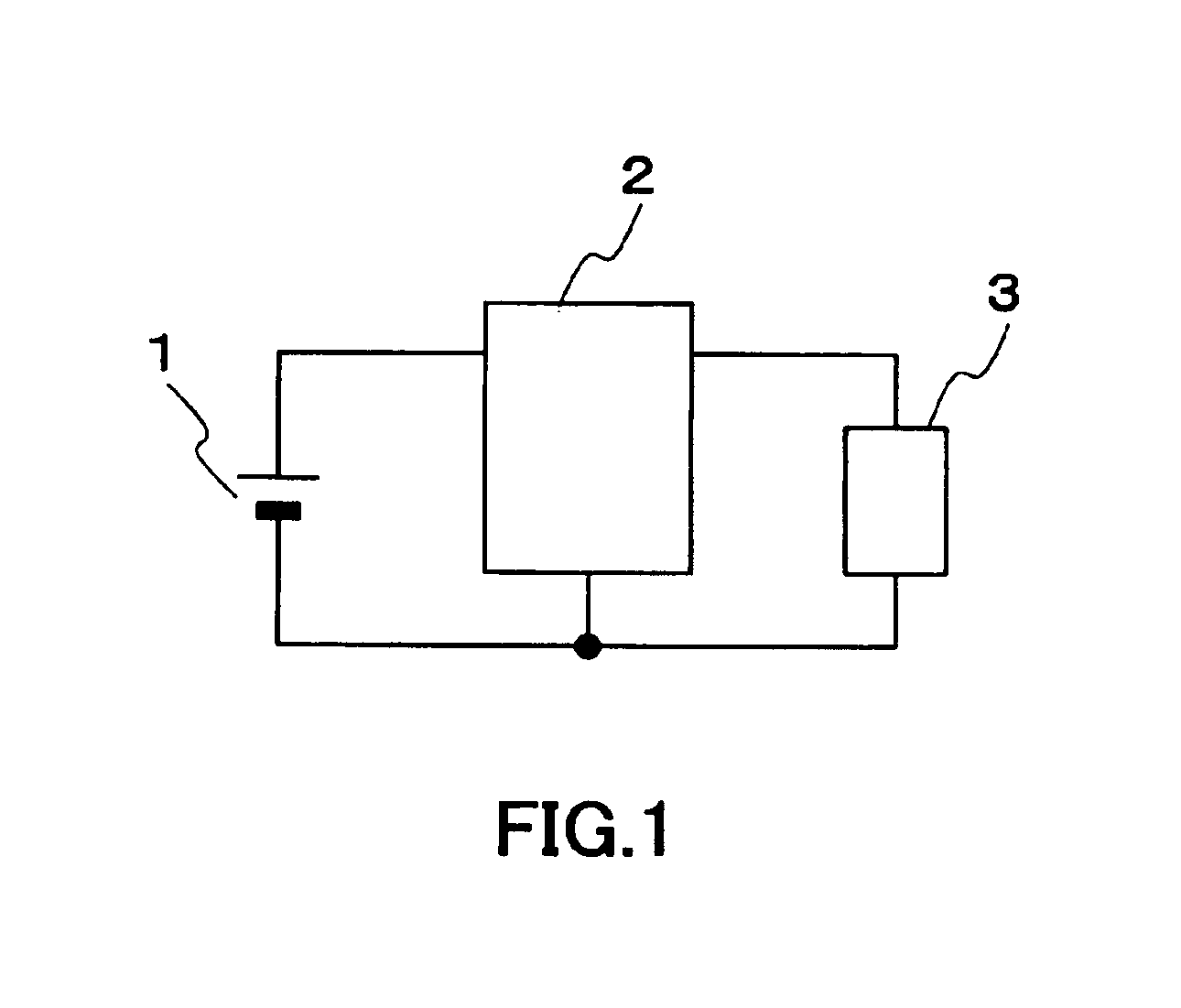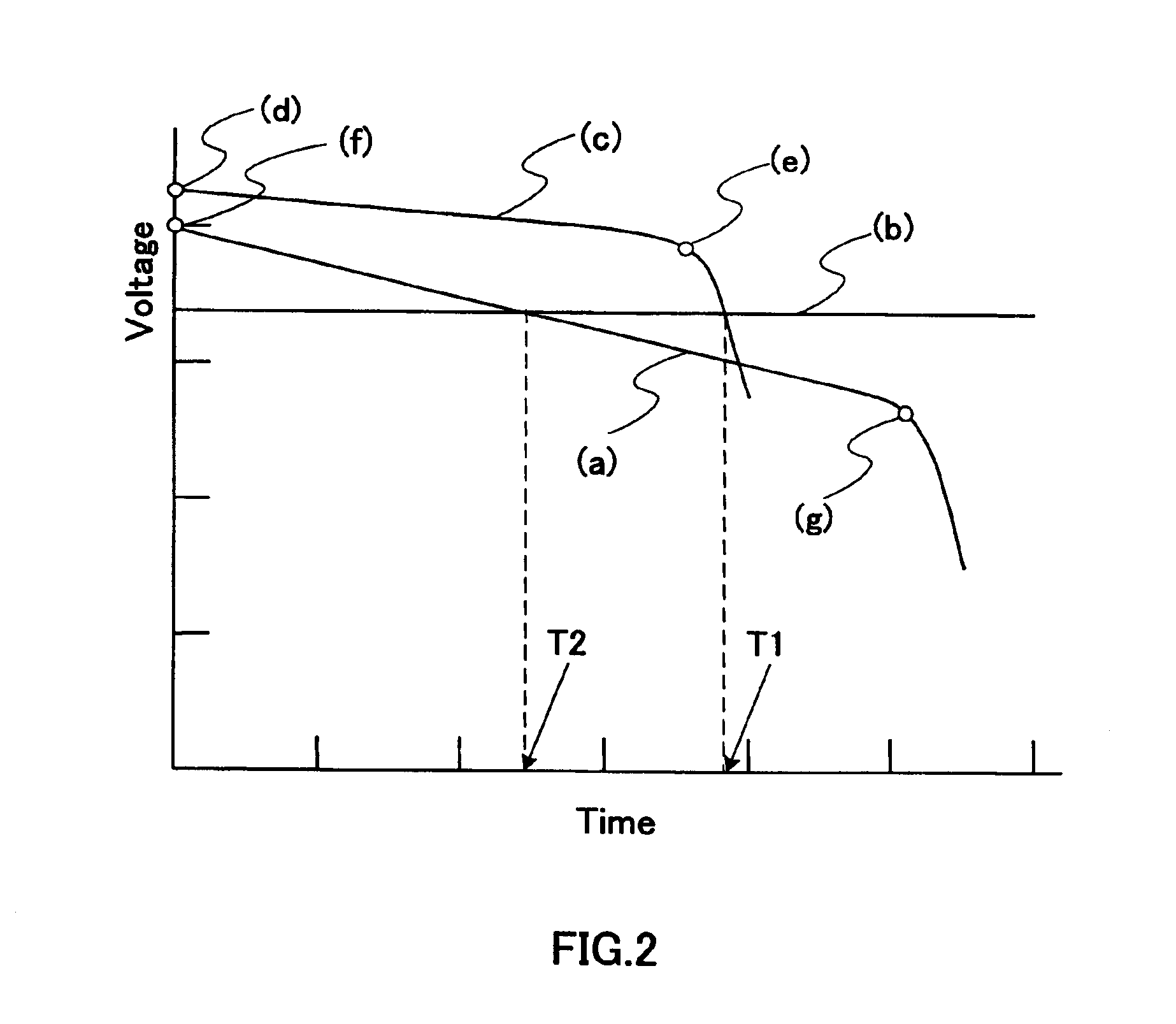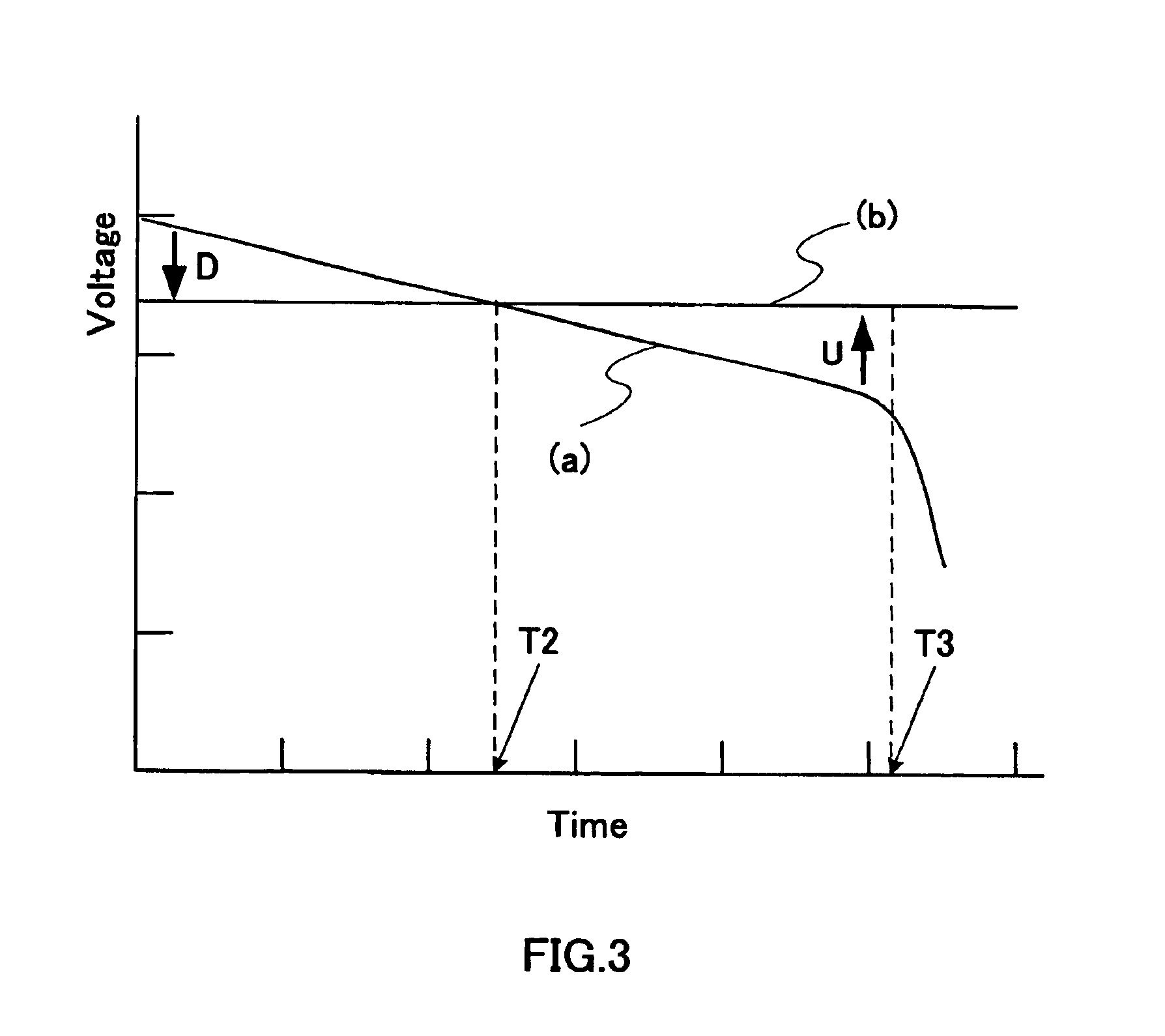Battery-driven electronic device and mobile communication apparatus
a technology of electronic devices and batteries, applied in the direction of cell components, process and machine control, instruments, etc., can solve the problems of large battery capacity of the above-described conventional lithium ion batteries, low battery voltage, and large battery voltage change ratios, etc., to achieve good efficiency
- Summary
- Abstract
- Description
- Claims
- Application Information
AI Technical Summary
Benefits of technology
Problems solved by technology
Method used
Image
Examples
first embodiment
[0068]FIG. 1 is a circuit block diagram showing a schematic configuration of a battery-driven electronic device according to a first embodiment of the present invention. In FIG. 1, reference numeral 1 denotes a battery employing lithium cobaltate as the positive electrode, graphite as the negative electrode, and a nonaqueous solvent containing lithium supporting electrolyte as the electrolyte and having discharge characteristics that are sloped over time with a battery voltage change ratio of 0.25 or more, as opposed to the conventional lithium ion battery having an average battery voltage of 3.7 V at room temperature as the discharge characteristics. Herein, the “battery voltage change ratio” refers to a value obtained by dividing a voltage difference (Ec−Ed) by Ec, where Ec is the open circuit voltage after the rated charge end voltage is reached, and Ed is the open circuit voltage after the rated discharge end voltage is reached.
[0069]Reference numeral 2 denotes a step-up and -do...
second embodiment
[0095]FIG. 8 is a diagram showing the configuration of a battery-driven electronic device and mobile communications equipment according to a second embodiment of the present invention. This embodiment is configured such that the load includes a power amplifier for wireless transmission that sends a burst-like signal as in the time-division multiplex system. In FIG. 8, reference numeral 21 denotes a battery having the profile that the power density is higher than that of a battery having a commonly used composition, but the discharge characteristics are sloped over time. Reference numeral 22 denotes a step-up and -down converter using the battery 21 as the input. Reference numeral 23 denotes a power amplifier to which the output voltage of the step-up and -down converter is input. Reference numeral 25 denotes an input terminal of the power amplifier 23, and reference numeral 26 denotes an output terminal of the power amplifier 23. Reference numeral 24 denotes controlling means for pe...
third embodiment
[0099]FIG. 9 is a configuration diagram of a battery-driven electronic device and mobile communications equipment according to a third embodiment of the present invention. This embodiment is configured such that the load includes a power amplifier for wireless transmission of the CDMA (Code Division Multiple Access) system. In FIG. 9, reference numeral 21 denotes a battery having a profile that the power density is higher than that of a battery having a commonly used composition, but the discharge characteristics are sloped over time. Reference numeral 22 denotes a step-up and -down converter to which the output voltage of the battery 21 is input, and reference numeral 23 denotes a power amplifier using the output voltage of the step-up and -down converter as the supply voltage. Reference numeral 25 denotes an input terminal of the power amplifier 23, and reference numeral 26 denotes an output terminal of the power amplifier 23. Reference numeral 24 denotes controlling means for con...
PUM
| Property | Measurement | Unit |
|---|---|---|
| battery voltage | aaaaa | aaaaa |
| diameter | aaaaa | aaaaa |
| current density | aaaaa | aaaaa |
Abstract
Description
Claims
Application Information
 Login to View More
Login to View More - R&D
- Intellectual Property
- Life Sciences
- Materials
- Tech Scout
- Unparalleled Data Quality
- Higher Quality Content
- 60% Fewer Hallucinations
Browse by: Latest US Patents, China's latest patents, Technical Efficacy Thesaurus, Application Domain, Technology Topic, Popular Technical Reports.
© 2025 PatSnap. All rights reserved.Legal|Privacy policy|Modern Slavery Act Transparency Statement|Sitemap|About US| Contact US: help@patsnap.com



